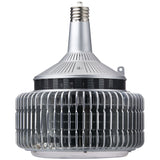Why Do a Lighting Retrofit? Your Old Bulbs Might Be Banned
Posted by Nick on for ProLampSales

Since the early 1990s, governments around the world have been increasingly concerned about the types of lighting citizens use in their homes and businesses. Large regulatory bodies, from the US government to the European Union, have been eliminating common inefficient forms of lighting in an effort to reduce energy usage.
Incandescent
The incandescent bulb has been the most common target of phase-out legislation, as it has been the most common light bulb used by consumers. As recently as 2011, the US Department of Energy estimated incandescent bulbs delivered 85% of illumination in households. The European Union and Australia phased them out in 2009, and the United States and Canada followed suit in 2014, with some exceptions.
Most incandescent bulbs are now gone from store shelves, hidden away in prepper bunkers for use after the end of the world. However, some specialty incandescent lamps are still available. Some of the applications still using these bulbs are traffic signals (especially in colder environments), rough service, and certain medical instruments where LED has not yet found a niche.
Halogen
General service halogen bulbs most commonly used for general illumination in households are now also mostly-phased out. Halogen MR and PAR lamps were phased out quite quickly in the fall of 2024 in the USA, with major manufacturers selling their remaining stock and discontinuing future production.
Halogen bulbs were only slightly more efficient than incandescent, so were the next logical type of bulb to phase out for general use. For very small spotlights, the phase-out can be very frustrating, as LEDs have not been able to match the precise beam angles of halogen yet, although some manufacturers like Soraa have come close in beam angles as low as 9-10 degrees.
Halogen lamps play an important part in medical lighting, so have not been phased out in these applications. There are fewer manufacturers making these specialty bulbs, and prices have gone up with longer lead times, but many are still available for specialized equipment.
T12 & 700 Series T8 Fluorescent
T12 fluorescent bulbs and magnetic ballasts have also been legislated out of the market, for the most part. Standard 4-foot and 8-foot T12 linear fluorescent tubes were phased out of the US market in July 2012, with 700 series 4- and 8-foot T8 lamps following in 2014.
Magnetic Ballasts
The magnetic ballast was phased out even earlier, in July 2010. The Department of Energy eliminated some types of magnetic ballasts with new rules in 2000, but the 2005 Energy Policy Act pushed the efficiency requirements further for them, with the rule taking effect in 2010. Electronic ballasts, which have taken the place of the old technology, are more energy efficient and run cooler.
Old Generation LEDs
Possibly the biggest surprise for consumers is how many LEDs are now phased out or banned. While only at state levels for now, especially California, LEDs now have to meet minimum lumens-per-watt requirements for general lighting, or they are not allowed to be sold.
This means that LED manufacturers have to develop more efficient lighting solutions, or compromise in other areas. Some LEDs have a higher color rendering index, but sacrifice energy efficiency for better colors. But that might make them not allowed to be sold in certain states.
Also, anyone trying to replace an LED bulb today with the same model they purchased a few years ago is likely totally out of luck. Bulbs from 2-3 years ago have been replaced by newer generations, which might have different wattages, lumen outputs, or even slightly differing color temperatures. This isn't so much a result of bans, but LED technology rapidly advancing.
No Choice But to Retrofit
While we've been looking at benefits of retrofits lately, complying with the latest lighting legislation is not so much a benefit as a cold reality. When enforcement of the incandescent phaseout was defunded in 2012, it was already too late. The large lighting manufacturers like GE, Philips, and Sylvania had already switched production lines to more efficient technology, and no lighting company wants to break the law, whether enforcement is funded or not.
The bottom line is, because lighting manufacturers are complying with the legislation, enforcement funding is a moot point. T12s, magnetic ballasts, and common household light bulbs are in the rear-view mirror, with newer fluorescent, CFL, and LED bulbs straight ahead.
For many businesses and consumers, there is little choice other than paying more up front for lighting technology that should contribute to lower energy bills in the long term. In these cases, as old inefficient light bulbs burn out, retrofitting to more efficient fluorescent or LED is the only choice available.
- Posted in Energy Efficiency, Retrofits
Featured Products (View All)
0 Comments




